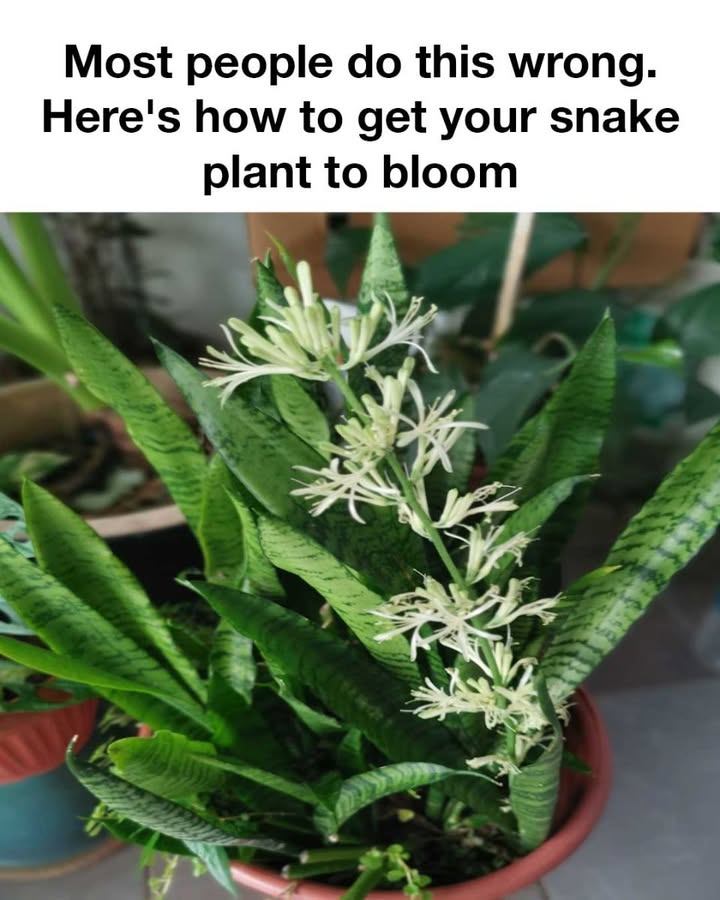Most people do this wrong. Here’s how to get your snake plant to bloom
McKayla Davis
Contributing Writer
Snake plants (Sansevieria, now classified under Dracaena) are among the toughest and easiest houseplants to care for. They thrive on neglect, tolerate low light, and rarely complain. However, getting a snake plant to bloom is a mystery to many plant owners. Most people assume their snake plant will never flower—but with the right care, it’s absolutely possible!
Snake plants produce tall flower stalks covered in delicate, fragrant white or greenish flowers. While it’s rare, you can encourage your plant to bloom by following specific care techniques. If you’ve never seen your snake plant flower, you might be doing something wrong.
Here’s How to Get Your Snake Plant to Bloom: 10 Proven Tips
1. Provide Bright, Indirect Light
Why it works: Snake plants are known for their ability to survive in low light, but they need bright, indirect sunlight to bloom.
How to do it: Place your plant near a south-facing or east-facing window with filtered light. If indoors, a grow light can help supplement natural sunlight.
2. Use a Well-Draining Potting Mix
Why it works: Snake plants hate sitting in wet soil, and poor drainage can cause root rot, preventing flowering.
How to do it: Use a succulent or cactus mix that contains sand, perlite, or pumice to improve drainage.
3. Let the Soil Dry Out Between Waterings
Why it works: Snake plants thrive on a cycle of dry soil and occasional deep watering. Keeping them slightly stressed (but not dehydrated) encourages flowering.
How to do it: Water only when the top 2-3 inches of soil are completely dry. In winter, water even less.
4. Keep the Temperature Warm
Why it works: Snake plants flower when exposed to warm temperatures, especially during the growing season.
How to do it: Maintain a temperature range of 70–85°F (21–29°C) during the day and avoid exposing your plant to temperatures below 55°F (13°C).
5. Provide a Slightly Root-Bound Environment
Why it works: Snake plants bloom when they feel slightly crowded in their pot. A slightly root-bound plant directs its energy into flowering instead of growing new leaves.
How to do it: Instead of repotting your plant often, wait until the roots are tightly packed before upgrading to a larger pot.
6. Use the Right Fertilizer

